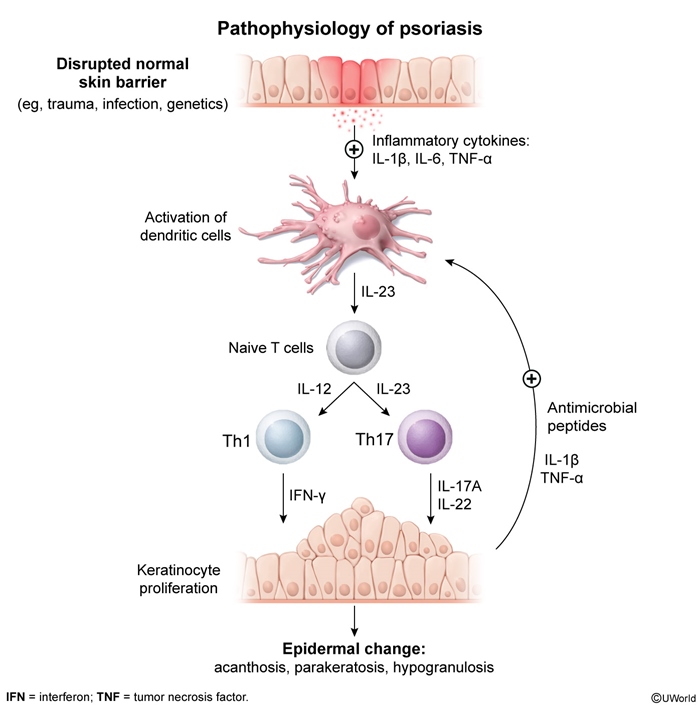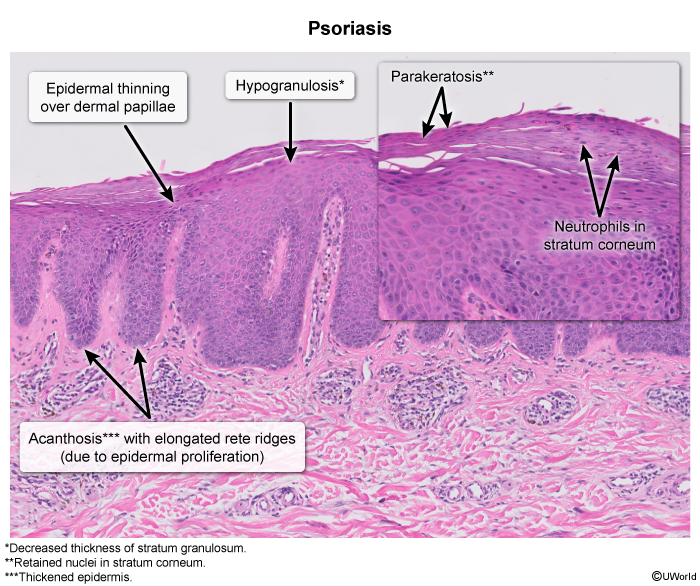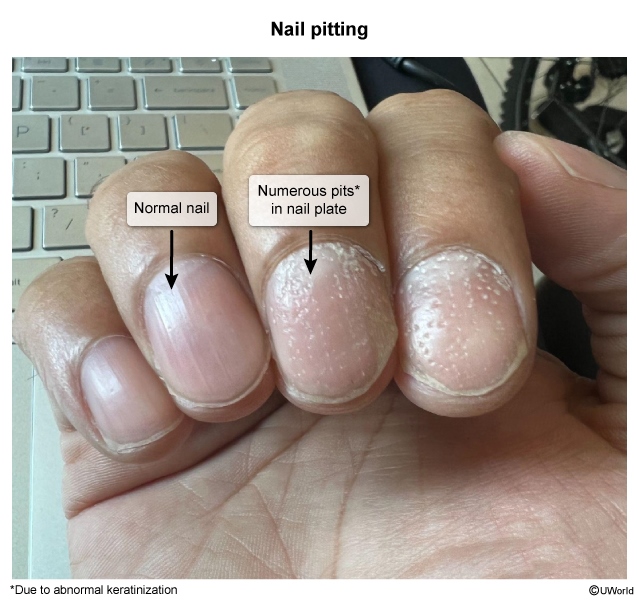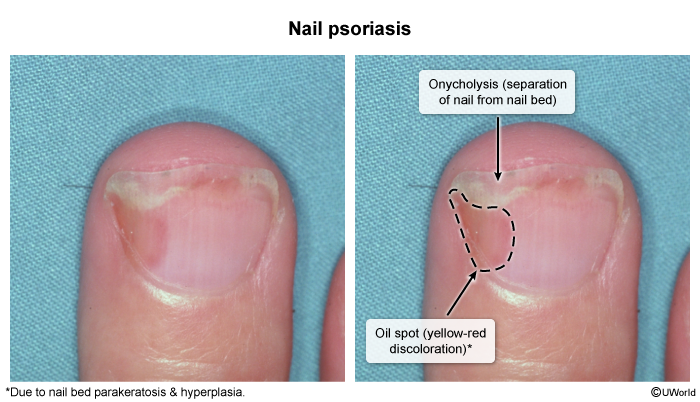Psoriasis
Article Sections
Introduction
Psoriasis is a chronic skin condition characterized by erythematous, scaly plaques located primarily on the elbows, knees, and scalp. It has a variety of clinical patterns and an unpredictable course. Extradermal complications, such as psoriatic arthritis, may also occur.
Pathophysiology
Psoriasis results from a dysregulated immune response involving keratinocytes, dendritic cells, and T lymphocytes, particularly Th1 and Th17 cells. The inflammatory cascade is triggered by environmental or autoimmune factors and leads to the release of cytokines that promote keratinocyte hyperproliferation, abnormal differentiation, and accelerated epidermal turnover (Figure 1).
Key cytokines in psoriasis include the following:
- IL-23: stimulates Th17 cells
- IL-17A (proinflammatory cytokine) and IL-22 (keratinocyte activation): secreted by Th17 cells
- TNF-α: indirectly stimulates Th17 cells
- IFN-γ (secreted by Th1 cells): induces further inflammation and epidermal thickening
Continue Learning with UWorld
Get the full Psoriasis article plus rich visuals, real-world cases, and in-depth insights from medical experts, all available through the UWorld Medical Library.
Figures

Images


